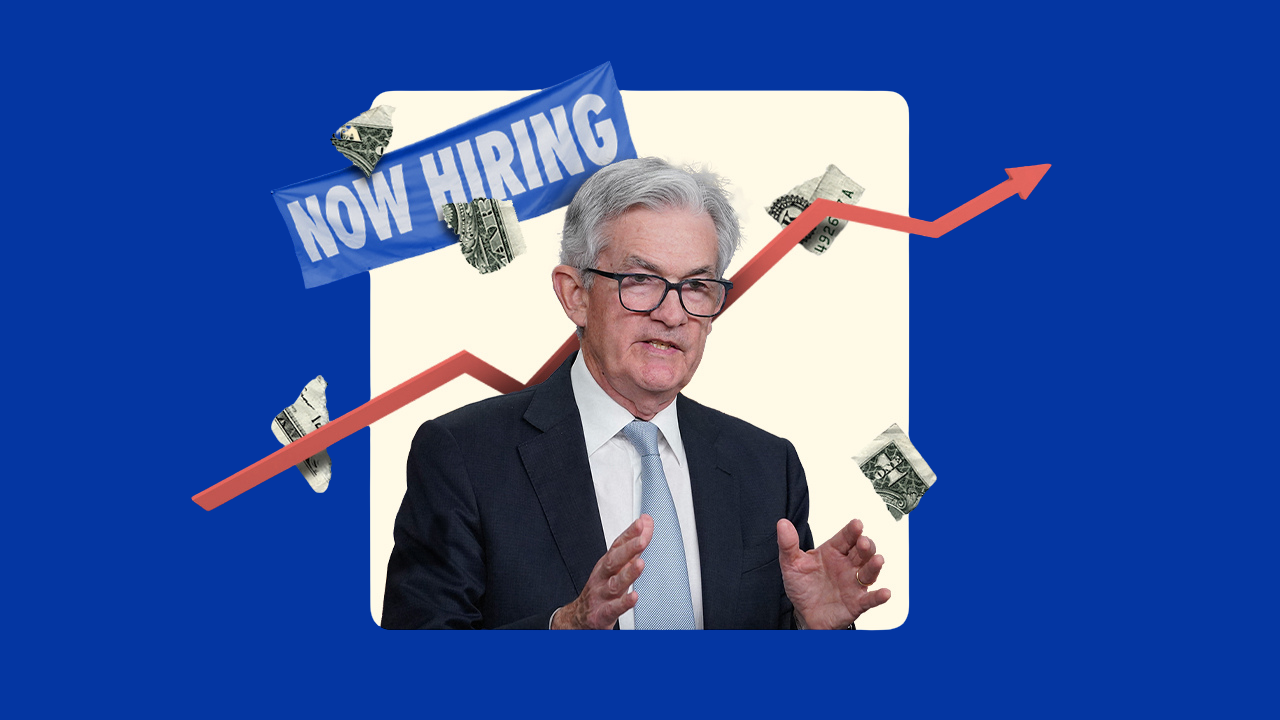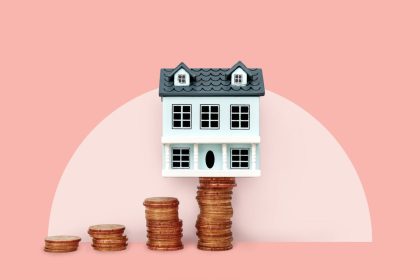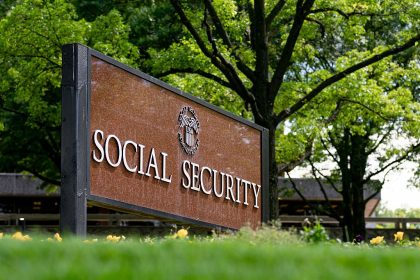First came the post-pandemic surge in prices. Then came the fastest jump in interest rates in four decades. Now, Americans are contending with a global trade war and a slowing job market.
After five years of one economic headwind after another, it’s no wonder many people feel uneasy about the U.S. economy. Few, however, expect it to get much better.
By September 2026, economists expect the unemployment rate to climb to 4.6 percent and job growth to average just 49,000 jobs a month, less than half of its current pace, according to Bankrate’s latest Economic Indicator Survey. That’s far from the collapse experienced during the pandemic or the Great Recession, but it’s also nowhere near the red-hot labor market of a few years ago.
Economists also think price pressures will remain stubborn — a view that stands in sharp contrast to President Donald Trump’s claims that inflation has been defeated. Recession odds, meanwhile, are still elevated, Bankrate’s survey found.
Those forecasts come as the Federal Reserve restarts interest rate cuts to help prevent a deeper slowdown. Policymakers are expected to cut two more times before the year ends to offer the U.S. economy more support. Yet economists don’t appear to think that those moves will be enough to fully reverse the slowdown.
With job growth cooling and unemployment expected to edge up, workers may witness further signs that the robust job market they experienced during the past few years is in the rear-view mirror.
— Mark Hamrick, Bankrate senior economic analyst
Bankrate has been polling the nation’s top economists on their expectations for the job market, inflation, the Federal Reserve, economic growth and more on a quarterly basis for a decade. Read on for the latest findings.
Here’s what the nation’s top economists are expecting for the U.S. economy over the next year
Economists point to rising risks for the economy: A softer job market, sticky inflation and elevated chances of a recession
It’s not an easy time to find a new job. Jobseekers now outnumber job openings for the first time since the economy emerged from the coronavirus pandemic, Labor Department data shows. Layoffs are low, but hiring has stalled. For workers, that means less leverage to negotiate higher pay — a shift many are already feeling, according to Bankrate’s latest Pay Raise Survey.
Economists say businesses are cautious about hiring in an uncertain policy environment, as volatile tariff and trade disputes make it harder for companies to plan. The growing use of artificial intelligence and weaker immigration could also be weighing on job growth.
An ongoing climate of caution is suppressing new hiring.
— Lauren Saidel-Baker, senior economist at ITR Economics
Economists don’t expect the tide to shift anytime soon. Only one economist is forecasting faster job growth and a lower unemployment rate in the year ahead, Bankrate’s poll found. The majority (81 percent) expect hiring to slow and joblessness to climb over the next 12 months.
At the same time, a slower job market might not take the steam away from inflation. Economists are losing confidence that inflation will return to the Fed’s 2 percent target anytime soon. Just 13 percent now think that will happen by the end of next year, down sharply from 29 percent last quarter.
The timeline for inflation to return to target has been significantly extended as a result of the trade war.
— Diane Swonk, chief economist at KPMG
Together, those trends point to a risk economists call “stagflation:” a rare and uneasy mix of elevated inflation and rising unemployment.
Most economists in Bankrate’s survey don’t see full-blown stagflation — an outcome the U.S. economy last experienced in the 1970s and ‘80s — as the most likely outcome. Yet, they acknowledge that elements of it are already emerging. Many in Bankrate’s poll are dubbing it as “stagflation-lite.”
Stagflation will not be a risk if we use its true definition. We don’t think inflation will get above 5 percent, like what happened during Covid. But something like stagflation-lite, with both inflation and unemployment going up, is a real risk.
— Tuan Nguyen, economist at RSM
Consumers are already appearing increasingly tapped out. Stubborn inflation and a weaker job market could make that even worse. More than 2 in 5 Americans with a credit card (46 percent) report carrying a balance, Bankrate’s Credit Card Report found. About a quarter (23 percent) don’t think they’ll ever pay it off. Low-income Americans are disproportionately more likely to carry a balance, the report found. More than half (56 percent) of cardholders making under $50,000 a year reported carrying a balance, versus 34 percent of those earning $100,000 or more.
All of those risks help explain why economists still see elevated odds of a recession over the next 12 months. Economists don’t think a recession is as near a certainty as they did a few years back. Back in 2022, those odds were as high as 65 percent. Those chances, however, are up from 26 percent at the end of 2024 and 36 percent in the first half of 2026.
A rising share of economists (13 percent) now say the odds of a recession are higher than a coin flip, or 50 percent. No economist in Bankrate’s prior quarter poll previously expected that the U.S. economy had that high of a chance. The economy’s current recession chances ranged from as high as 80 percent to as low as 18 percent, according to respondents.
In short, economists say the economy isn’t falling off a cliff, but it could be walking on the razor’s edge of a slowdown.
I have long held the view that economic growth would slow to near stall speed but avoid a recession in the near term. Nonetheless, the risk of recession remains high, and an adverse, unexpected shock could easily send the economy into recession.
— Bernard Markstein, president and chief economist at Markstein Advisors
From inflation and trade wars, to the coronavirus pandemic and intense pressure from Trump, the Fed has had its fair share of dilemmas to navigate. Periods of elevated inflation and rising unemployment pose challenges for the Fed. Keeping rates too high for too long can weaken hiring even more. Cutting rates too quickly or too soon, however, risks fueling more inflation.
Powell has demonstrated resilience and pragmatism in navigating the Fed through a series of extraordinary economic shocks. While the delayed response to inflation remains a blemish, his commitment to transparency and data-driven policy earns him a high grade.
— Selma Hepp, chief economist at Cotality
Managing your money in a cooling economy: What economists’ latest forecasts mean for you
The picture economists are painting isn’t entirely dire, but it likely isn’t comforting, either. A slower job market, stubborn inflation and lingering recession risks point to an economy that’s losing steam, even if it hasn’t stalled completely. That can make it even harder to navigate your personal finances in the months ahead. Finding a new job could take longer, and your paychecks might not stretch as far.
In uncertain times like these, it helps to focus on what you can control: building a cushion of cash for emergencies and creating a game plan for when money feels tight, Hamrick says.
“While the U.S. economy has proven remarkably resilient, the risk of recession hasn’t gone away,” Hamrick says. “Though not inevitable over the next year, elevated risks serve as a reminder that people should prioritize emergency savings and strive to pay down highest cost debt, with credit card debt at the top of the list.”
1. Be prepared for longer job hunts
When businesses pull back on hiring, the balance of power shifts toward employers, often leading to slower wage growth and fewer opportunities to switch jobs. But slower labor markets don’t mean opportunities vanish — they just become more competitive.
Lean into what sets you apart. Get comfortable demonstrating how you add to your company’s bottom line, why you’re worth the investment and how you’re continuing to build your skills and get more efficient. Top performers often stand out, even more when hiring slows.
2. Prioritize your recession preparedness
Economists in Bankrate’s survey still see elevated odds of a downturn, reason enough to build up a safety net, according to Hamrick. An emergency fund can be a crucial cushion if layoffs pick up or expenses rise unexpectedly.
If you’re just getting started, save what you can and keep it in an account that earns a competitive return, like a high-yield savings account.
At the same time, focus on paying down high-interest debt as a way to free up extra cash that you can recycle back into your emergency fund. If you have credit card debt, a balance-transfer card can help you speed up your credit card payments by lowering your annual percentage rate (APR) to 0 percent for a set number of months.
3. Stay the course with your investments
The stock market has looked past plenty of downside risks, crushing multiple record highs this year, but volatility could always be in store. For long-term investors, though, short-term turbulence shouldn’t be a reason to panic.
Keep any cash you might need in the next couple of years liquid and accessible. For the rest, remember that investing in financial markets has historically outpaced inflation and built wealth through ups and downs. Staying diversified, investing regularly and resisting emotional reactions to headlines remain the best ways to stay on track.
Why we ask for feedback
Your feedback helps us improve our content and services. It takes less than a minute to
complete.
Your responses are anonymous and will only be used for improving our website.
Help us improve our content
Read the full article here





